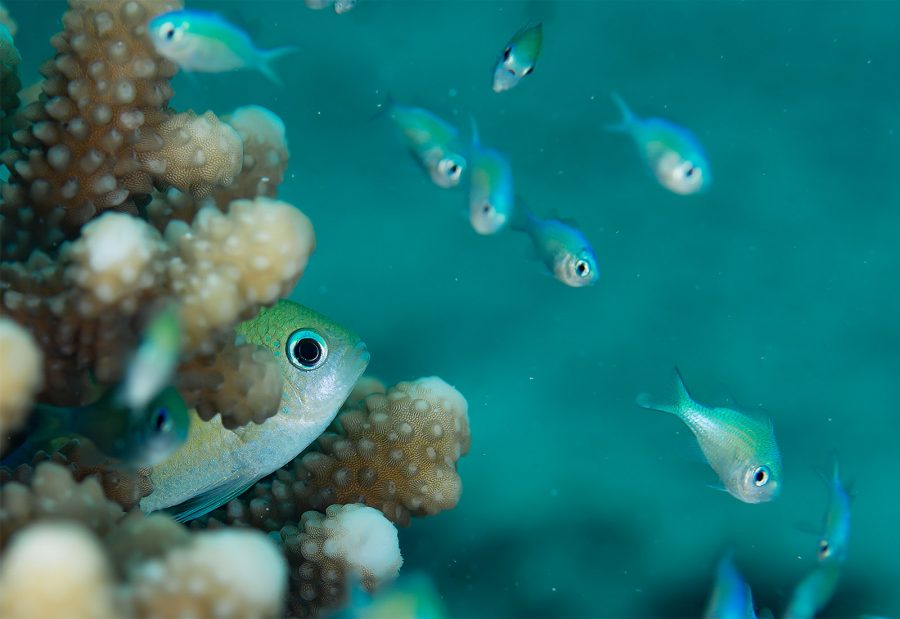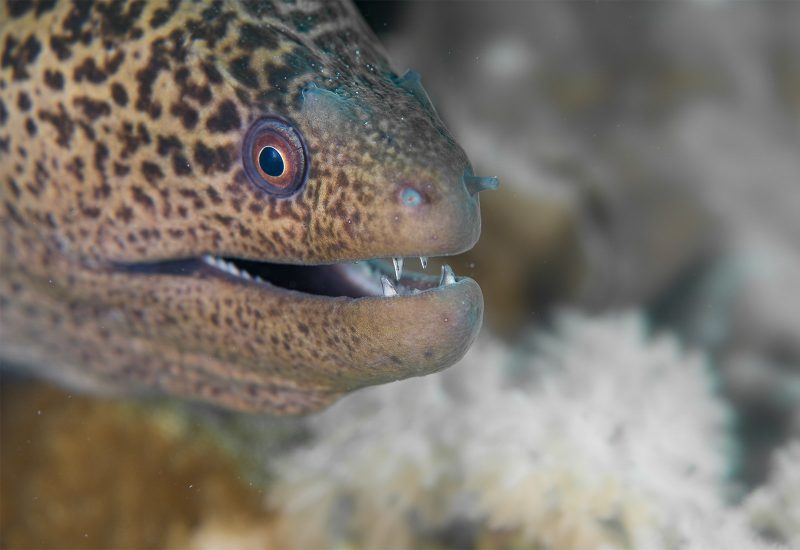8 Tips to Create Beautiful Underwater Animal Portraits

We’ve all been there: slowly crawling along the seabed, desperately trying to see through a cloud of sand as every sea creature in the vicinity leaves you in their dust. Animal portraits can often be tricky photographs to achieve, but with the added challenge of creating underwater photos it can often seem impossible to get close enough to get the authentic and colourful images you envision.
Not only do diving conditions complicate the process, but they also make it impossible to stay still. Changing tides, currents, and visibility means that both you and your camera are constantly on the move, often scaring away the creatures that you are trying to photograph. Hunkering down on the seabed sometimes seems like a good idea, but you’re usually then faced with the issue of stirring up sand and silt; this creates poor visibility and backscatter in your images.


In spite of all these issues, there are still many ways that you can simplify the process – and some of them might not be what you expect.
#1 Be the Non-Intrusive Photographer
The most important thing that you should always keep in mind is that the ocean is a home. By entering the water you are immediately in someone’s dining room, living room, or sleeping quarters. Respect this and you’ll begin to see a positive change in your photographs.
It’s essential to never corner or chase a subject for a photograph, and believe me when I say that your photographs will show this if you do. It’s easy to spot a panicked animal and more often than not you’ll be left in a cloud of sand as they make their escape. Your first priority should always be to become a non-intrusive photographer, and let any sea creature come to you on their own terms. It is, after all, their territory.
#2 Understand Your Subject
It can be frustrating to both find and photograph underwater creatures, as many are masters of camouflage and those that are not can move at speeds you could never compete with. Something which will massively improve your underwater portrait photography is realising the importance of knowing about your subject. Find a cheap identification book for the area you are diving in and get to know what’s in the water.
Being able to identify a certain species is a great starting point. After this, you’ll be able to recognise their habitats, their hunting tendencies, and, most importantly, their characters. Some sea creatures are known for being shy; others display certain traits when feeling threatened. Getting to know your subject will prepare you for when you meet them and help you approach them in a non-threatening and proactive way. After all, happy subjects mean better photographs for you.
#3 Try to Get Closer
When shooting on an underwater macro lens, you normally have to get extremely close to achieve a good photograph. This can become problematic when your subjects are either afraid of you, or skilfully hiding amongst luscious corals, kelp, or the shadows of a rocky ledge. Getting close enough for a beautiful portrait shot is often a tedious waiting game, but there are a few tricks that can speed up the process.
Read more: A Guide to Underwater Macro Photography
Firstly, you’ll find that any sea creature is more afraid of your camera than it is of you. In a wetsuit and fins, divers often vaguely resemble a seal. Your camera, however, is a frightening and foreign object, expelling light that can momentarily stun and blind shoals of fish. Try gently approaching with your camera to your side, not in front of you. You’ll often find sea creatures are far more forgiving of your presence without the stress of strobes in their face. Once they seem comfortable, you can gently pull your camera forward and wait for them to curiously come and investigate the reflections in your dome port.
Another way to intrigue your subject is to gently wiggle your fingers in the sand. Most sea creatures will come closer to search for food amongst the lifted silt, and the others will at least be distracted enough for you to take a photograph. Knowing your subject plays a big part in this method, too. For example, cuttlefish communicate with their tentacles, and so wiggling your fingers in the sand will often draw them so close that they play with your fingertips.
#4 Capture the Personality
One of the reasons portrait photography is so appealing is because it reveals “personality traits” in animals that we find completely foreign to us. Unveiling their character helps us relate to them, love them and, in turn, we can do our bit to protect them as a species.
When photographing underwater it’s important to remember this purpose when finding a subject to photograph. Which creature is holding eye contact with you? Which one looks like it’s smiling slightly? These factors are the making of a good portrait photograph: an image that essentially makes the viewer feel something more emotive than just intrigue.
#5 Be Prepared
A large part of mastering underwater portraits is having the right settings to begin with. This can be difficult if you’re shooting in manual mode and the meeting with your subject is fleeting. By the time you’ve adjusted your shutter speed, more often than not the curious creature you were trying to photograph is gone. One way to avoid this is by preparing your settings before you approach your subject at all. This way you can concentrate on creatively composing the image, rather than wasting time fiddling with your camera.
For most macro portrait shots, autofocus and a low depth of field is a very good place to start. This will ensure your photos have a non-distracting background and that your subjects (especially their eyes) are sharp. A fast shutter speed and a wide angle lens will be needed for subjects that are often on the move, such as a dolphin or a stingray. Take a minute to think through what you need before you rush in to take a photo as it will improve your chances of getting the shot that you want.
#6 Choose Your Angle Carefully
Finding a unique perspective is always important when taking any photo. For underwater portraits, however, a particularly useful angle is to approach from below. By taking a lower standing on the seabed and getting on eye level, you startle your subjects a little less than when flying in from above. It also makes it easier to frame your subject against a non-distracting background. For shooting black backgrounds, ideally your subject would be framed against open water. It’s important to experiment and be creative whilst you’re shooting. Be sure to shoot in both vertical and horizontal positions, rather than using the same position all of the time.
Swapping over to a wide-angle lens can give you a whole new perspective on portrait photography. Shooting an animal in its environment can often be a powerful way to convey size, space, and context.
#7 Take Your Time
Unfortunately, there is a time limit on every dive. There seems a smaller amount of opportunity to get the photos that you want than on land, and it’s all very dependant on weather conditions and animal behaviour. In spite of this, it’s important not to rush through your dive.
Going slowly will firstly help you conserve your air and enjoy a much longer dive. By taking a calm, relaxed approach, you lower your heart rate and ultimately don’t use as much of your air supply. You will also begin to notice the countless little creatures you were rushing by, many of them hiding until you pause and wait a while. By moving your body at a slower pace you also appear far less threatening to wildlife. You’ll find it suddenly becomes much easier to gently approach your subjects and your photography will improve as a result of this.
#8 Have Patience
As frustrating as it is, we have no control over the underwater environment. There will still be some dives where the wildlife is simply not cooperating at all and others where every other diver saw a sea creature that you had been searching for, but it somehow evaded you.
It’s important to remember that good things come to those that wait. Sometimes it’s best to stick with a small area for the duration of your dive and painstakingly wait for your subject to come near you. Beautiful portraiture is about capturing a candid moment with your subject and this has to be on their terms. It may take longer, but take it from me – the incredible portraits you get will be worth the wait!











